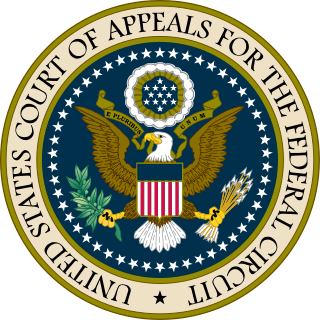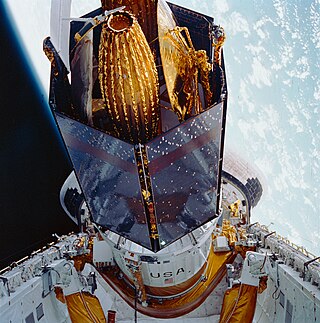 W
WAIDS amendments of 1988, better known as the Health Omnibus Programs Extension (HOPE) Act of 1988, is a United States statute amending the Public Health Service Act. The Acquired Immune Deficiency Syndrome amendments were compiled as Title II - Programs with Respect to Acquired Immune Deficiency Syndrome within the HOPE Act of 1988. The Title II Act appropriated federal funding for Acquired Immune Deficiency Syndrome (AIDS) education, prevention, research, and testing. The U.S. legislative title provisioned the establishment of the presidentially appointed National Commission on AIDS. The S. 2889 legislation was passed by the 100th U.S. Congressional session and signed by the 40th President of the United States Ronald Reagan on November 4, 1988.
 W
WThe Department of Veterans Affairs Act of 1988 changed the former Veterans Administration, an independent government agency established in 1930, primarily at that time to see to needs of World War I, into a Cabinet-level Department of Veterans Affairs. It was signed into law by President Ronald Reagan on October 25, 1988, but actually came into effect under the term of his successor, George H. W. Bush, on March 15, 1989.
 W
WThe Governors Island Summit was a summit meeting between U.S. President Ronald Reagan and General Secretary of the Communist Party of the Soviet Union Mikhail Gorbachev. It was held on December 7, 1988. U.S. Vice President and President-elect George H. W. Bush was also in attendance.
 W
WThe Housing and Community Development Act of 1987, P.L. 100-242, 101 Stat. 1815, is a United States federal law which amended the Housing and Community Development Act laws with regards to the Housing Act of 1937. The amendments revised sections of the Act concerning community and neighborhood development, family and single housing, and preservation for low income home owners. The law provided insurance for FHA Home Equity Conversion Mortgages (HECM) better known as a home equity conversion loan or reverse mortgage.
 W
WThe Omnibus Foreign Trade and Competitiveness Act of 1988 is an act passed by the United States Congress and signed into law by President Ronald Reagan.
 W
WSchism v. United States, 316 F.3d 1259, was a case decided by the United States Court of Appeals for the Federal Circuit, on appeal from the United States Court of Federal Claims arising out of a 1998 lawsuit brought against the United States in an attempt to ensure that military benefits promised in exchange for military service would continue. Ultimately, the Federal Circuit heard the case en banc and denied the benefits requested by the plaintiffs, leaving it to Congress to fashion a solution. It has been described as "[o]ne of the most important cases the court decided" in the area of military pay and benefits.
 W
WThe 1988 State of the Union Address was given by the 40th President of the United States, Ronald Reagan, on Monday, January 25, 1988, at 9 p.m. EST, in the chamber of the United States House of Representatives to the 100th United States Congress. It was Reagan's seventh and final State of the Union Address and his eighth and final speech to a joint session of the United States Congress. Presiding over this joint session was the House Speaker, Jim Wright, accompanied by George H. W. Bush, the Vice President of the United States.
 W
WSTS-26 was the 26th NASA Space Shuttle mission and the seventh flight of the orbiter Discovery. The mission launched from Kennedy Space Center, Florida, on 29 September 1988, and landed four days later on 3 October. STS-26 was declared the "Return to Flight" mission, being the first mission after the Space Shuttle Challenger disaster of 28 January 1986. It was the first mission since STS-9 to use the original STS numbering system, the first to have all its crew members wear pressure suits for launch and landing since STS-4, and the first mission with bailout capacity since STS-4. STS-26 was also the first U.S. space mission with an all-veteran crew since Apollo 11, with all of its crew members having flown at least one prior mission.
 W
WSTS-27R was the 27th NASA Space Shuttle mission, and the third flight of Space Shuttle Atlantis. Launching on 2 December 1988 on a four-day mission, it was the second shuttle flight after the Space Shuttle Challenger disaster of January 1986. STS-27R carried a classified payload for the U.S. Department of Defense, ultimately determined to be a Lacrosse surveillance satellite. The vessel's heat shielding was substantially damaged during lift-off, impacting the right wing, and crew members thought that they would die during reentry. This was a situation that was similar to the one that would prove fatal 15 years later on STS-107. Compared to the damage that Columbia sustained on STS-107, Atlantis experienced more extensive damage. However, this was over less critical areas and the missing tile was over an antenna which gave extra protection to the spacecraft structure. The mission landed successfully, although intense heat damage needed to be repaired.
 W
WThe Supreme Court Case Selections Act of 1988 is an act of Congress that eliminated appeals as of right from state court decisions to the Supreme Court of the United States. After the Act took effect, in most cases, the only avenue by which a litigant could obtain review of most lower court decisions was through the writ of certiorari, which was granted at the discretion of the Supreme Court, rather than available to the litigant as a matter of right.
 W
WGeneral Motors in 1988 held the largest exhibition to that date of its vehicle design and technology, called Teamwork & Technology: For Today and Tomorrow, at New York’s Waldorf-Astoria hotel, site of the first Motorama exhibition in 1949.